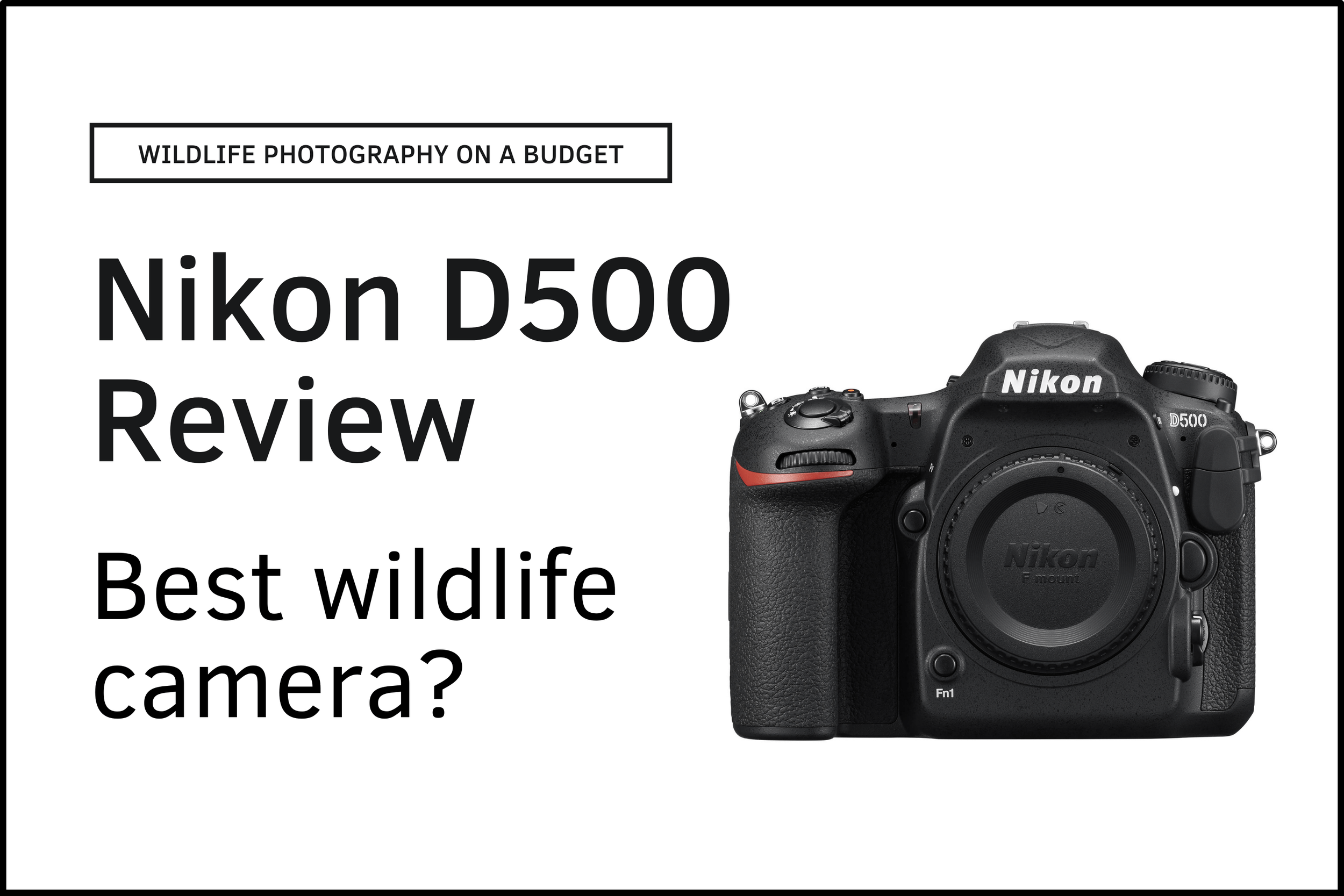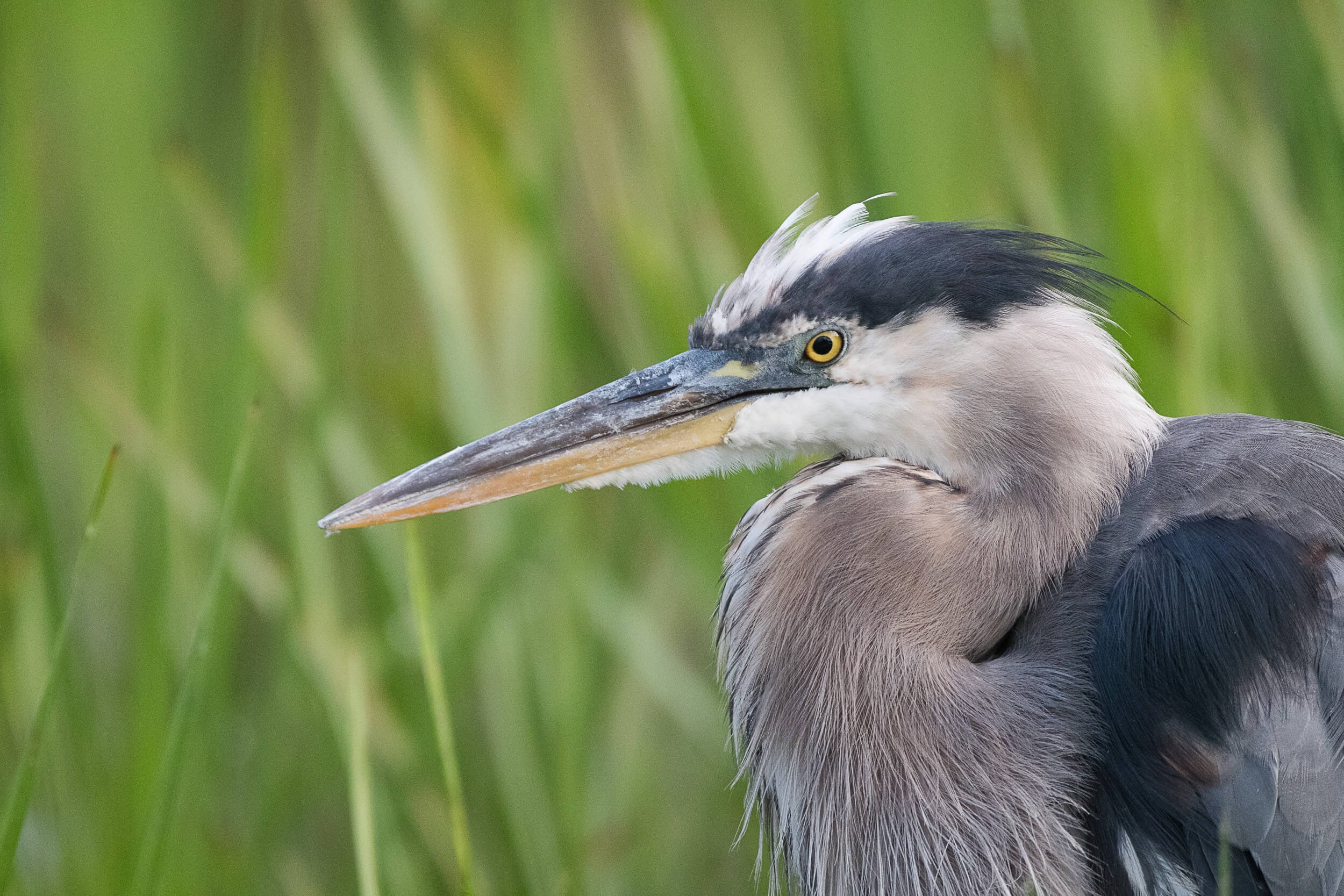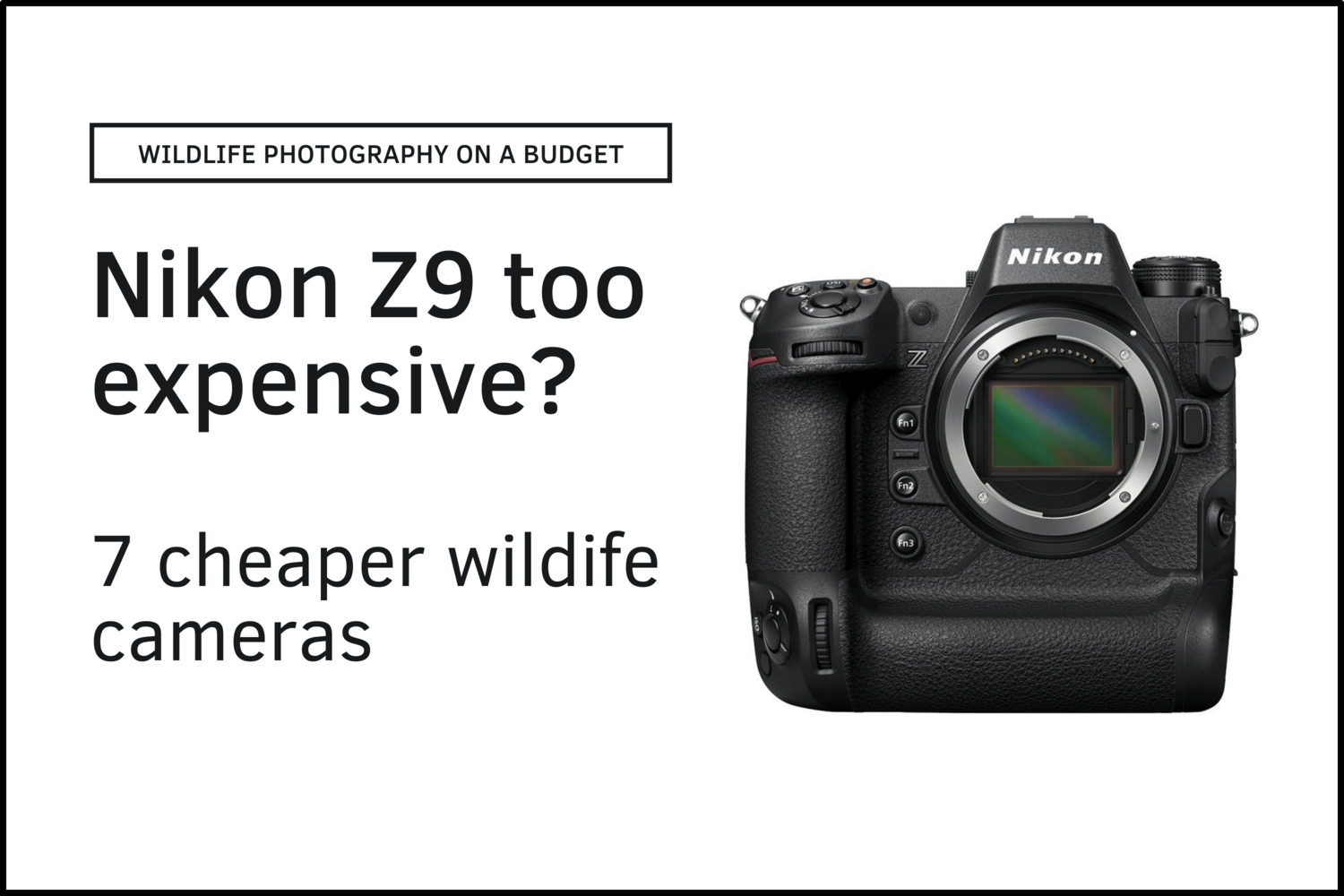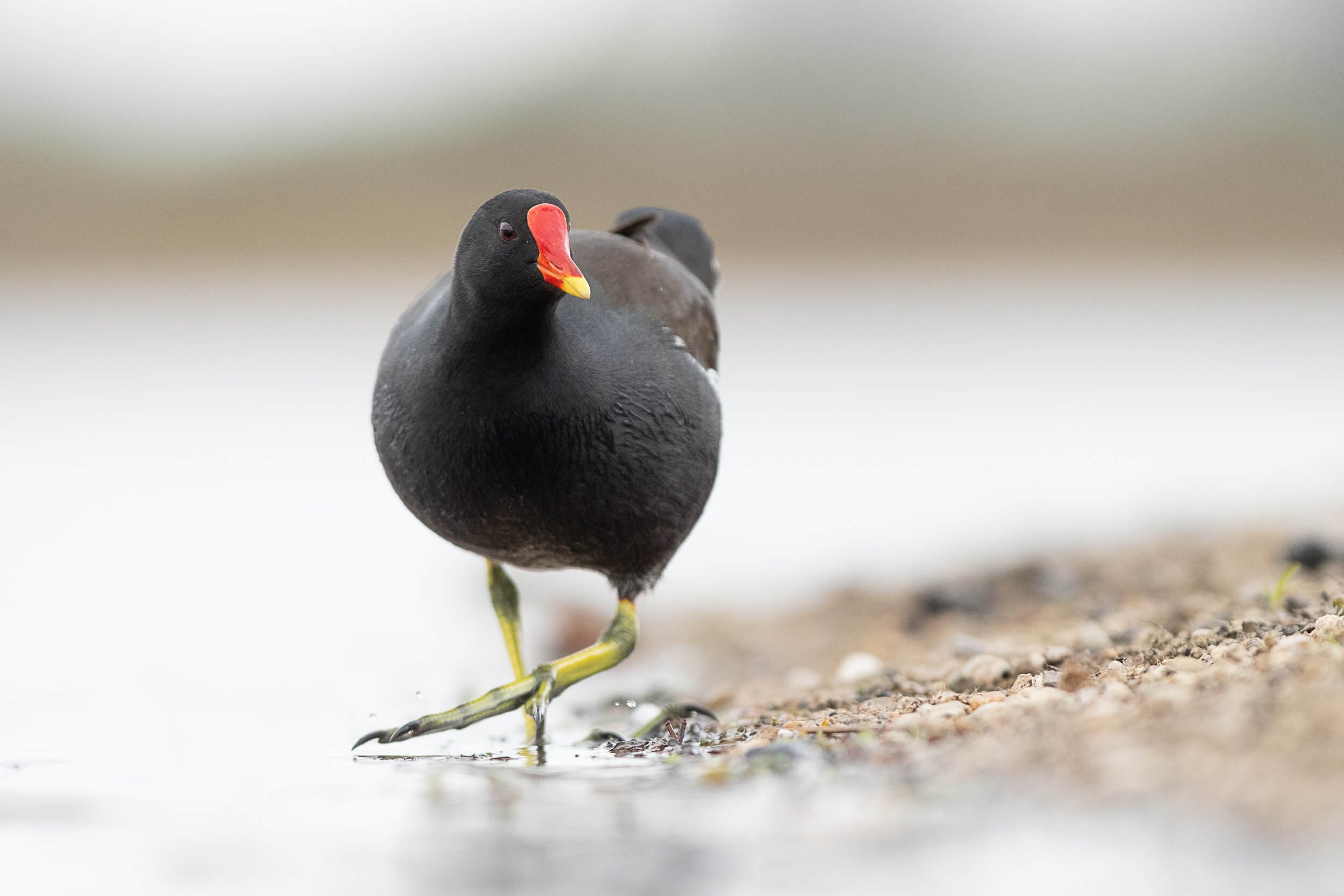Why the Nikon D500 is one of the BEST Cameras for Wildlife Photography in 2023 (Review)
In the past, the Nikon D500 has been one of the top cameras for wildlife photography.
But is it still relevant in 2023?
In this article, we will review the Nikon D500 from the perspective of a wildlife photographer.
Much has changed in the world of wildlife photography over the last couple of years. Mirrorless cameras have exploded onto the photographic landscape, and quite a few people have abandoned DSLRs for these smaller systems.
I bought my D500 on Amazon in 2020, and I still love shooting with it. It’s a wonderful camera for wildlife photography, and it’s also one of the best cameras for bird photography.
Great blue heron | Nikon D500 + Nikon D500 + 200-500 mm | ISO 4000, 1/640, f/5.6
In this Nikon D500 review, I will:
Give an in-depth analysis of the pros and cons of the Nikon D500
Share sample photos using the camera
Compare it to other Nikon cameras for wildlife photography
Reveal my wildlife photography settings for the Nikon D500
Most importantly, I will tell you why I think the Nikon D500 is still one of the best cameras for wildlife photography in 2023… especially for wildlife photographers on a budget!
Wildlife Photography Gear Reviews
If you are a wildlife photographer on a budget, you will not want to miss these articles where I provide in-depth reviews about some of the most affordable Nikon lenses on the market.
Nikon D500 Specifications
The Nikon D500 is a top choice for wildlife photography—and not just when it launched in 2016, but even today. As an APS-C or crop sensor camera, it is relatively lightweight and boasts an impressive 10 FPS continuous shooting speed.
The AF system is fast and accurate, and the ISO can be boosted to extraordinary levels (although I would not always recommend doing so). Also, the 153-point autofocus system is one of Nikon's best.
Weight: 770 grams
Dimensions: 147 x 115 x 81 mm
Sensor size: 23.5 x 15.8 mm CMOS sensor with 20.9 megapixels (5496 x 3664 pixels)
ISO: 100-51,200 native range (extendable to 50-1,640,000)
AF points: 153 (99 cross-type)
Continuous shooting speed: 10 frames per second
Semipalmated plover | Nikon D500 + 300 PF + 1.4x TC | ISO 640, 1/2000, f/5.6
Is the Nikon D500 good for wildlife photography?
Put simply, the Nikon D500 is an excellent camera for wildlife photography for several reasons. However, no system is perfect. In this section, I will review the Nikon D500, which includes both the pros and cons of the Nikon D500.
Pros
Outstanding autofocus
The Nikon D500's autofocus system is remarkable, especially compared to other DSLRs. It focuses very quickly and accurately—it focuses even better than most Nikon mirrorless cameras.
It also has several autofocus points spread across most of the viewfinder, which means you can focus on almost anything within it. When tracking moving subjects, it does so accurately and reliably, which is great for when you visit a national wildlife refuge during migration!
Frames per second
The frame rate of 10 fps is among the highest available in any DSLR, and it's certainly an advantage for capturing fast action. The buffer size is also massive and allows you to shoot many photos before waiting for them to be written to the memory card.
Unrivaled ergonomics
The Nikon D500 has been out for several years, but there aren't many cameras that can match its build and ergonomics. It’s small, light and designed for speed. The body is weather-sealed and feels solid in the hand. There are two command dials on the front and back, which make adjusting exposure very easy.
There’s a dedicated ISO button on the left of the top plate, as well as an AF-ON button for focusing. There are also 4 buttons in front of the shutter release that can be programmed to various functions, such as choosing an autofocus point or setting a specific aperture or shutter speed.
1.5x crop factor
The Nikon D500's DX format sensor gives you a 1.5x crop factor compared to FX format lenses (full frame). This means lenses will have a longer effective focal length than on FX cameras, so a 200mm lens will have a focal length of 300mm when used on the D500.
This makes it an ideal choice for wildlife photographers who often need long lenses to get close to their subjects. We rarely complain about too much reach when it comes to shooting birds and other small animals.
Buffer
The buffer is really nice on this camera as well—it will shoot up to 200 RAW images before slowing down!
Price
When it was new in 2016, the D500 was priced at $1,999.95 from Nikon. It is currently available for $1,599.95 brand new from Nikon, and you can often find even cheaper deals for it used on Amazon.
This makes the Nikon D500 quite affordable compared to other available wildlife photography cameras.
If I were to buy this camera now, I would try to get the cheapest option possible while choosing a platform I felt safe on. While Kijiji can have great deals, especially considering the lack of shipping costs, you do not have the same level of security as a larger company, such as Amazon.
That being said, I have bought most of my gear second-hand through Kijiji and, as of right now, have had no significant negative experiences. In fact, I managed to get my Nikon used on Kijiji for $1300... CAD!
Northern gannet | Nikon D500 + 200-500 mm | ISO 400, 1/2000, f/8
Cons
However, it has some limitations, such as a limited dynamic range in RAW files and the absence of certain features like image stabilization, which may make the camera less attractive to some people.
Low light performance
It has a fairly small sensor compared to a full frame system, which means it won't perform like these larger sensors in low-light conditions. The Nikon D500 has a max ISO of 51,200, but you won't want to go that high to save your image quality.
I tried to push its limits by shooting in some challenging situations. I'm happy to report that the D500 performed better than I expected. Its low light performance is great for a crop sensor camera, but even though you can shoot up to ISO 6,200 with decent results (in some cases), I'd recommend keeping it below 3,200 if you want the highest quality images.
This may not be as big of an issue with the noise reduction software available today, like DXO Pure Raw. This new technology has made me more comfortable shooting at high ISOs, even with my D500!
Autofocus lacks advanced animal and bird autofocus
Another disadvantage of the Nikon D500 is its autofocus system, which lacks advanced animal and bird autofocus modes like those found on the Nikon Z9, Canon R5, Sony A1, and other Canon and Sony models.
To be clear: you can still take incredible wildlife images with excellent focus using the D500's autofocus. You will just have to work harder for it.
However, to put things in perspective, animal and bird autofocus are new technologies that did not exist until a few years ago. In fact, it was just added to the Nikon lineup in 2021.
Here’s a summary of the pros and cons of the Nikon D500.
Competitors
Nikon D500 vs Nikon Z9, Z6, and Z7
Prior to the Nikon Z9, Nikon Z cameras had autofocus systems that were much worse than Nikon's DSLR cameras for wildlife photographers. While their predecessors had excellent autofocus, these new mirrorless systems would not be fast enough to track moving subjects, like birds in flight.
That said, they beat out the D500 in some areas. On one hand, the Nikon Z7 series has a 45.7 MP sensor, giving you greater ability to crop. On the other, the Nikon Z6 series has the best low light, high ISO performance of any Nikon cameras made to date. In addition, the Nikon Z6 (12 FPS) and Nikon Z6 II (14 FPS) have a higher frame rate (when the autofocus is locked) than the Nikon D500.
The new Nikon Z9 is much better in terms of autofocus speed, accuracy, and tracking. This is thanks to its animal and bird eye AF, which is especially when shooting birds in flight. Prior to the Nikon Z9, this was a privilege reserved only for Canon and Sony shooters.
Lastly, the Nikon Z cameras also have access to the entire Z mount lineup of lenses (which are supposed to be as sharp and as fast as they come), like the brand new 800 mm PF lens. Conversely, the D500 only has access to the older, yet still quality F mount lenses.
Want to read more about the Nikon Z9?
Check out these two articles to get some excellent tips on what to consider before buying it and some cheaper alternatives.
Nikon D850 vs D500
As far as wildlife photographers are concerned, the Nikon D500 and Nikon D850 are in many ways very similar cameras. They share the same 153 point autofocus system, which is excellent for acquiring accurate focus on any number of species. That said, there are some differences that set them apart.
Pros
Resolution and dynamic range: With 45.7 MP of resolution, the Nikon D850 has more megapixels than the 20.9 MP sensor on the D500.
The higher resolution of the D850 means you can crop more tightly on an animal and still maintain a large enough image size to print at high quality. This can be useful when you don't have a long lens attached to your camera and need to crop in to get a tight shot of an animal from short range.
The Nikon D850 also has a better dynamic range than the D500, so you can recover more detail in shadows and highlights when processing your RAW files in post-production.
Low light performance: For wildlife photographers, the Nikon D850 is a better camera in low light than the Nikon D500. As a full frame camera, the D850 has a larger sensor area than the D500, a crop sensor camera.
This means you get more flexibility when shooting in areas where light is limited, such as forested areas or during dusk, and produce images with far less noise, especially at higher ISOs.
Viewfinder magnification: All things being equal, a larger viewfinder helps you compose your shots better. The D850's viewfinder magnification is 0.75x vs the D500's 0.66x. This means the D850 makes your subject appear significantly larger in the viewfinder than with the D500.
(Note: Viewfinder magnification is not the same as an optical zoom lens (e.g. a 300mm lens on a 1.5x crop factor body is equivalent to 450mm on a full frame). Viewfinder magnification refers to the size of your subject inside the viewfinder, relative to its actual size in real life. This is different from an optical zoom lens, where your subject appears larger because it's further away from you and thus appears bigger in real life.)
Battery life: According to Nikon, the D850 has a battery life of around 1,840 shots, but the D500 has only 1,240. Of course, it is always better to have more power than less, so you can shoot for longer. However, this difference was not significant enough to affect my shooting experience. I didn't notice it at all. In fact, I have repeatedly shot both cameras way past their advertised shot limit without a problem.
Double-crested cormorant | Nikon D500 + Nikon 200-500mm | ISO 1600, 1/1000, f/5.6
Cons
Weight: The D850's full frame sensor comes at the cost of weight. At 1015 g (2.24 lb) vs. 860 g (1 lb), the D850 is more than 16% heavier than its smaller counterpart. If you're not used to carrying heavy gear all day, this could be problematic for your back and shoulders—and it could even ruin your experience by making you less interested in taking photos!
I'm usually a person who prioritizes traveling as light as possible, so any time I can shave off a few pounds (without too many other trade-offs) is worth it for me.
File size: Its files are also much bigger than the D500's, which can slow down your workflow and become expensive if you need lots of storage space for them. If you're shooting with a card reader connected to your laptop, it can take a long time for the files to copy over.
And once they've transferred, expect your photo editor (whether Adobe Lightroom or something else) to take longer than usual to build previews so you can start working on your photos.
You'll want to make sure you have a good computer and fast storage options, like SSDs with plenty terabytes, if you want to use the D850 for wildlife photography.
Speed: The D850's shooting speed (7 FPS and 9 FPS with the battery grip) is slower than the D500's, which does not allow you to get as many action shots. In wildlife photography, you often don't have the time to set up your shot and wait for your subject to move into position.
With a faster FPS, the D500 allows you to get more action shots in less time. This means you can capture more movements and expressions from an animal, like a northern pintail flapping its wings, that might otherwise be missed with a slower camera.
Price: The D850 costs $3,000, which is significantly more than the $1,599 price tag on the D500. This can put a strain on your budget if you're not prepared to spend that much money on a camera body alone. In an already expensive hobby, reducing costs is key. Therefore, it's important to consider how much money you spend on all your equipment.
Mallard | Nikon D500 + Nikon 200-500mm | ISO 720, 1/50, f/5.6
Nikon D5 vs D500
Pros
Speed: At 14 FPS, the Nikon D5 is faster than the D500, which allows you to shoot faster and capture more action shots, such as those of birds in flight.
Low light performance: The Nikon D5 is a great camera for wildlife photography in low light. The Nikon D5 is much better in low light than the D500.
According to DXO Mark, the Nikon D5's sport score of 2,434 is much better than the D500's 1,324 sports score. This means the D5 can capture more detail with less noise in low light situations like dawn, dusk, or dark environments (like a forest).
Viewfinder magnification: The D850's viewfinder magnification is 0.72x vs the D500's 0.66x—this means that with the D850, your subject will appear significantly larger in the viewfinder than with the D500.
Battery life: According to Nikon, the D5 has a battery life of around 3,780 shots compared to the D500's 1,240 shots. As opposed to the D850, this is a significant difference, which allows you to be in the field about 3 times as long.
Cons
Weight: At 1415 g (3.12 lb), the Nikon D5 is nearly double the weight of the D500. The difference between the two models is massive, and this makes them feel very different in your hands.
This means it will be more difficult to carry around all day, especially if you plan to use your camera for more than just taking pictures of animals. Personally, this is a big red flag for me, when considering how similar both cameras are.
Price: The first thing to consider is that the D5 ($6,499) is a much more expensive camera than the D500. In fact, it costs more than 3 times more! Therefore, if you are on a budget, this camera is likely not for you. In fact, it's probably not for most wildlife photographers.
Nikon D7500 vs D500
The Nikon D7500 and D500 are similar cameras with 20 MP and APS-C sensors. For wildlife photographers, the main differences lie in the following categories.
Pros
Weight: The Nikon D7500 is lighter than the Nikon D500.
Price: The Nikon D7500 ($999.95) costs about a third less than the D500 ($1,599).
Cons
Autofocus system: Contrary to the D500, which has 153 autofocus points (99 cross type), the D7500 only has 51 (15 cross type). It can also focus better with teleconverters, maintaining 15 autofocus points when at f/8.
Speed: The Nikon D7500 (8 FPS) is 20% slower than the Nikon D500 (10 FPS).
Having shot both cameras extensively, I can say they are very similar, but ergonomically, the D500 feels better in the hand. Although it is a bit heavier, it is more durable and has a superior autofocus system.
White-tailed deer | Nikon D500 + 300 mm f/2.8 VR II + 1.4x TC | ISO 500, 1/1000, f/2.8
Bonus: How do I use my D500?
As my main body, I tend to shoot my D500 with several lenses for different purposes:
Nikon 300 PF - when I want to be very light and mobile
Nikon 70-300 mm - when I want to take wider shots and environmental portraits of wildlife
Nikon 200-500 mm - when I want to have a lot of zooming flexibility and the best VR
Nikon 300mm f/2.8 VR II - when I want the best low light performance and image quality
My D500 camera settings for wildlife and bird photography
Whenever I use my Nikon D500, I have a few go-to settings for wildlife photography:
Image quality: RAW
Exposure mode: Manual
ISO: Auto ISO with maximum ISO as 12,800 (I can still control the ISO with exposure compensation)
Autofocus mode: AF-C (Continuous)
Autofocus area mode: Single point AF for most of my shooting to have ultimate control over where I focus, but Group area AF for when I shoot birds in flight
Common moorhen | Nikon D500 + 300 PF + 1.4x TC | ISO 1250, 1/1000, f/5.6
Bottom line
The Nikon D500 is a fantastic Nikon DSLR, and it’s priced well for what you get. It’s incredibly fast and has a capable low light sensor for an APS-C camera that will help improve your nature photography.
Most importantly for wildlife photographers, apart from the Nikon Z9, it has Nikon's best autofocus system, which is excellent for taking tack sharp photos. In addition, if you love extra reach, having a 1.5x crop factor will be a bonus when photographing birds or far away subjects.
Overall, I can confidently say that, although it may not be on par with newer mirrorless cameras, the Nikon D500 is still one of the best cameras for wildlife photography in 2023.
In my opinion, it is by far the best crop sensor camera that Nikon, Canon, or Sony have to offer.
Now you just have to pair it with a reasonably-priced Nikon lens, like the Nikon 300 PF, 70-300, or 300mm f/4 AF-S, and you'll be taking jaw-dropping photos with excellent image quality in no time!
Griffon vulture | Nikon D500 + 300 PF + 1.4x TC | ISO 250, 1/500, f/5.6
Want to become a better wildlife photographer?
If you are interested in learning more about the technical and artistic side of photography to take your photos to the next level, check out these awesome tutorials that can help you take amazing wildlife photos!










